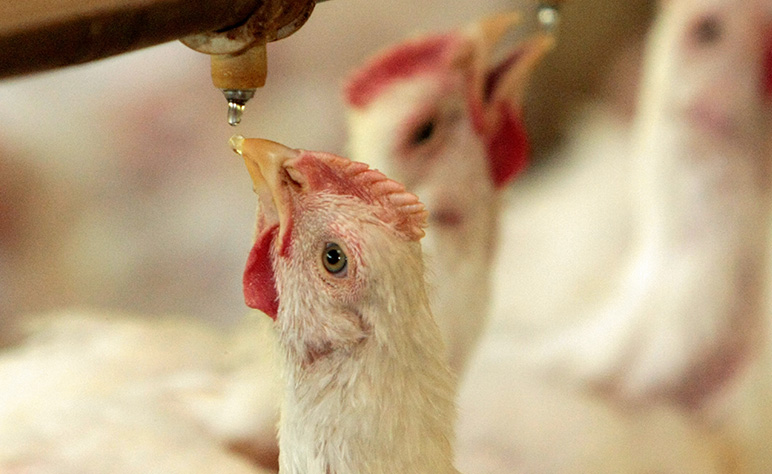
- 11.9.2023
- Education
Principles of Performance – Infectious Bronchitis in Free Range Birds
“A laying site must have control of IB, it is the door through which E. coli enters”
Infectious bronchitis has a myriad of effects on the bird’s physiology, but the key areas for our laying sites are the reduction in egg quality, reduction in production, increase in secondary infections such as E. coli, MG and MS, and the possible need to intervene with antibiotics.
With the exponential growth of the free range market, we have seen an increase in the occurrence of IB, chiefly IB793b which is the cause of many field challenges, with IBQX still present. The most effective means of controlling IB is using live vaccines, but with that comes the technical aspects of ensuring that this incredibly delicate vaccine successfully reaches the bird in its live state.
The overriding principle of vaccination is it must remain in its active state to have any effect. Live vaccine must remain live at point of contact with the hen. Exposure to Chlorine levels as low as 0.02ppm in the drinking water can have dramatic effects – work by Dr. Jordan of Liverpool University in showed a reduction in titre (vaccine strength) of 100 times in the space of 1 hour at .02ppm. To consider how important Dr. Jordans work is, standard tap water has .2ppm-.6ppm and farm water chlorination can see 2ppm of Chlorine Dioxide, which 2.6 times more potent than standard Chlorine, thus making any IB vaccine given in the presence of these sanitisers ineffective and a waste of time, performance money and effort. Water stabiliser is a must, sodium thiosulphate neutralises chlorine and stabilises PH levels. Aviblue, at 1 cap per 200 litres of water consumed, is essential. This has been proven repeatedly in both lab and field environments.
Once the vaccine has been prepared, what we are always seeking in a water route vaccination is the highest possible level of bird uptake. Over the last 40 years, we have done extensive work in this area, understanding and refining the process, through constant testing. A highly effective method of rigorously testing our water volume calculation is the use of tongue staining trials. Whereby a strong concentration of Aviblue is used and once the calculated stock solution has been consumed, a proportionate sample of birds tongues are inspected over the entire laying house. Our most recent set of trials on adult laying hens showed a 98% success rate in vaccine consumption. This means that we have achieved the gold standard of live vaccine administration, a fully protected flock with the vast majority receiving an effective dose.
Quite simply, the water lines must always be primed until the dye is present at the end of the lines, and enough water must be allowed to ensure a near complete uptake of vaccine for the shed. To do this, vaccination is required after the birds have gone through a thirsted period, such as overnight. The stock solution must be what a thirsted bird will drink over a 2 hour period. It takes the same amount of time to do it perfectly as it does to do it incorrectly, so perfection is always the goal.